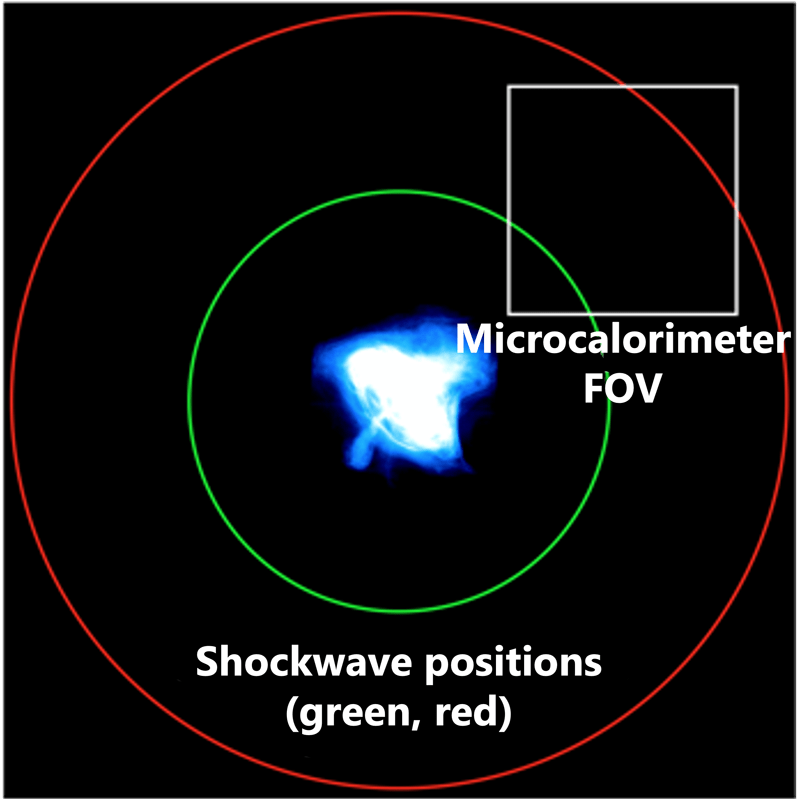X-ray Spectroscopy Imaging Mission (XRISM) and the Origins of the Crab Nebula
Feb. 13, 2024 | Aerospace Project Research Associate, ISAS people
Research Summary

I study the supernova remnants and the pulsar wind nebulae (PWNe). Due to the suitability of the X-ray band for observing high-energy phenomena in these objects, I have been researching X-ray detector development alongside observational data analysis. I am affiliated with the Institute of Space and Astronautical Science as an Aerospace Project Research Associate for the X-ray Spectroscopy Imaging Mission (XRISM) project, which I have been involved in since my graduate student life.

XRISM is an astronomical observatory developed by JAXA in collaboration with international partners, including NASA and ESA. Fig. 1 shows its graphical representation. On September 7th, 2023, the satellite was successfully launched from the Tanegashima Space Center.
It is an X-ray observatory and is equipped with two detectors (see Fig. 2). One is a microcalorimeter, which can measure the energy of X-ray photons with extreme precision. By installing a small 5mm squared sensor into a massive cooling device weighing approximately 300kg and cooling it to a temperature of nearly 50 mK, it measures energy from the slight temperature change when an X-ray photon is absorbed. The other detector is a CCD camera, developed for X-rays using the same detection principle as CCD sensors for visible light. Four CCD sensors are arranged in a two-by-two array, allowing them to capture images of objects larger than the full moon in imaging areas. I belong to the two-instrument team and the scientific operation team now. I have been part of the CCD team since its early stages and have worked on evaluating and selecting chips for XRISM, as well as calibrating these data. Despite facing numerous challenges during development, our camera was implemented in the satellite.

XRISM equipped with these detectors was transported to the Tanegashima Space Center in March 2023. It was encapsulated in a fairing (see Figure 3), underwent inspections and preparations, and was finally mounted on an HII-A rocket for launch. I joined as a research associate just before this launch and witnessed the satellite's liftoff from the control room in Sagamihara. I continue to analyze the data sent from the detectors in orbit. Astronomers from around the world are part of the XRISM satellite's science team and eagerly await its observational data.
So, what insights can we expect from the XRISM satellite? Its exceptional energy measurement precision enables the detection of faint emissions from hot gases. My particular interest lies in the Crab Nebula, a notable example of a PWN. While it has been extensively studied historically, the details of its originating supernova explosion remain unresolved. Typically, when a massive star undergoes a supernova explosion, it generates shockwaves traveling at supersonic speeds of several thousand kilometers per second. These shockwaves heat surrounding materials and ejecta to millions of degrees, transforming them into hot gases that emit X-rays. If the shockwaves spread isotropically, one would expect to observe X-rays in a ring formation centered around the explosion site. So far, no X-rays from hot gasses have been discovered.

If XRISM can observe these thermal emissions (see Figure 4), we can delve deeper into the nature of its supernova explosion. Factors such as the explosion energy, which determines the speed of the shockwaves, and the mass of the ejecta and surrounding materials, determine the flux of the thermal emission. The nebula is believed to have lower values for these factors. If we can confirm the thermal emission, determining the radius of the shockwave would impose constraints on the explosion energy. Our research group, consisting of detector experts, is diligently preparing for this. Furthermore, we might get closer to understanding the origins of PWNe, which have historically been classified as crab-like supernova remnants.


 KANEMARU Yoshiaki / XRISM Project Team, ISAS
KANEMARU Yoshiaki / XRISM Project Team, ISAS